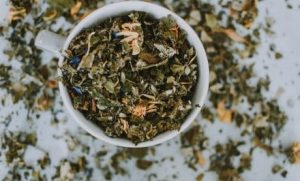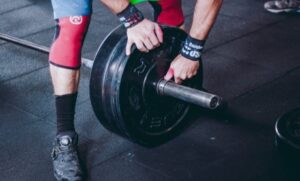Various claims and reports on experiences with astaxanthin and its effects on testosterone levels and libido are circulating on the internet.
I believe that there is a considerable need for information here. Therefore, today we take a look at two studies related to hormone balance and interpret them. In addition, we refresh your know-how on hormones a little bit.
Astaxanthin & Testosterone and other Hormones
Let’s first clarify the basics
Before we dive into studies and explicit questions, it is time to clarify some hormone basics – if you are already fit here, you may, of course, skip this section.
Testosterone
Testosterone is a sex hormone that occurs in both sexes but is present in much greater concentrations in men. More specifically, the male body forms testosterone on signals from the hypothalamus – primarily in the testes. In women, the synthesis takes place in the ovaries and adrenal glands. Important building materials for this hormone are precursors such as cholesterol, progesterone, and DHEA.
For both men and women, this hormone is essential for a functioning body. The hormone influences among others:
Muscle protein synthesis
cartilage growth
Sexual desire (libido)
Bone structure and stability
body hair
Energy, stamina and zest for life
If you – whether male or female – have too little testosterone in the body, you feel limp, impotent, more prone to depression and may have problems with losing weight. Especially in older men, but also in women of all ages, this problem occurs quite often.
Dihydrotestosterone (short DHT)
What testosterone can do, DHT can do even better – roughly speaking. Through an enzyme called 5-alpha-reductase, the body transforms the hormone testosterone into DHT. This is responsible for the development of male sexual characteristics, including:
muscle mass
Thick, greasier skin
Body and facial hair
aggressiveness
That was the positive side of the DHT, but there are also downsides: DHT is seen as a key factor in the development of prostate cancer and hereditary hair loss. It promotes the growth of the prostate and destroys in genetically prejudiced men, the hair roots – or shortens the growth phase continues until it comes to balding.
DHT plays a major role in symptoms of hirsutism associated with PCOS and PCO in women. The female body produces too much DHT, resulting in masculinization phenomena: beard growth, missing rule, increased body hair, oily skin. Menopausal women are also often affected by a DHT surplus.
Estradiol
Estradiol belongs to the group of estrogens (exactly, estrogen is not a hormone, but a group of hormones) and is in a way the antagonist of testosterone. This hormone is also found in both sexes – in men, however (usually) in a greatly reduced amount. It plays a key role in the development of female sexual characteristics and plays a major role in the menstrual cycle and in pregnancy. In addition, it is used in the body, among other things, to maintain a healthy bone density.
Exactly like the DHT the case, the Estradiol has dark sides, because …
… it favors the increase of body fat.
… it inhibits cartilage growth.
… it can promote prostate enlargement in men and breast cancer in women.
… it leads in excess to feminization in men.
Primarily, estradiol is produced by the woman in the ovaries. The man’s testicles also produce estradiol to a lesser extent. The fact that testosterone in fat cells can aromatize to estradiol, it comes in overweight men, especially often to an excess of this hormone. This resulting feminization phenomena z. As gynecomastia (breast growth), weight loss and depression.
Problems arise when the hormone balance is interrupted.
All of these hormones have both positive and supposedly negative properties. However, these negative things only come into effect when the hormones get out of balance. This happens, among other things, when there is particular physical stress (eg illness, overwork, signs of aging) or mental stress.
Sure, at this point you could say: Astaxanthin improves the overall health and therefore has a positive effect on the hormones. There is nothing wrong with that, but there are also direct effects of astaxanthin on the hormone system, according to the studies mentioned.
More about that right now. First of all, I briefly summarize what effects unbalanced testosterone, DHT or estradiol levels may have:
Hereditary hair loss in men: There is too much DHT present, which damages the hair roots and leads to baldness.
Hirsutism: Too much DHT causes in the woman that male sexual characteristics are too pronounced (eg in PCOS).
Prostate complaints: Here too much DHT ensures that diseases of the prostate are favored.
Prostate growth: The cause of this may be an excess of estradiol in men.
Overweight, feminization & testosterone deficiency in men: Too many fat cells transform testosterone into estradiol.
Libido loss: A too low testosterone or DHT level makes the desire for the opposite sex disappear.
Listlessness and tendency to depression: Again, too little testosterone may be the cause in both sexes.
Of course, the consequences are even more far-reaching, but these are the most frequently discussed issues – and it is precisely here that astaxanthin could provide some relief.
Effect on Testosterone & Estrogen
Using astaxanthin, the conversion of the male sex hormone testosterone to dihydrotestosterone can be attenuated. This is done by inhibiting the 5α-reductase enzyme. If a genetic predisposition exists, dihydrotestosterone can trigger hereditary hair loss. In addition, it is able to promote the growth of prostate cancer. Astaxanthin boosts the action of the natural 5α-reductase inhibitor Saw Palmetto.
However, in a clinical study, which was not conducted in a placebo-controlled manner, 800 or 2000 mg saw palmetto extract was taken with astaxanthin. The study participants included healthy men who took the preparation for 14 days. The higher dose resulted in a decrease in the female hormone estrogen and DHT. At the same time, the testosterone level was increased by almost 40 %.
However, an increase in testosterone production could not be confirmed in another placebo-controlled clinical trial, even though there was a positive trend of 38%. But again, the scientists found a reduced concentration of estrogen and DHT in the blood.
Studies on Astaxanthin
In connection with astaxanthin, testosterone and Co., the following two studies are often cited or addressed:
More testosterone, less DHT & less estradiol
Angwafor et al. found in a study from the University of Yaounde in Cameroon that a supplement containing astaxanthin, saw palmetto extract and zinc inhibits both 5-alpha reductase (conversion of testosterone in DHT) and aromatase (conversion of testosterone to estradiol).
Here are some facts about the study design:
42 participants aged between 37 and 70, divided into 2 groups of 21 persons participated.
One group received 800 mg, the other 2000 mg of the supplement daily.
The experiment went on for 14 weeks
Improvement of sperm quality
Another study by Comhaire et al. conducted at the Ghent University Hospital in Belgium showed that Astaxanthin has a positive effect on the fertility of the man. It greatly improved the sperm quality here. Here are the facts:
30 infertile men and their healthy mates participated and were divided into 2 groups.
One group was given 16 mg of astaxanthin daily, the other a placebo.
Within 3 months, the pregnancy rate in the astaxanthin group was increased by 54.5%.
In addition, improved sperm quality was found on several markers.
As a result, when it comes to astaxanthin and hormones such as testosterone, this study is often cited. Whether the result is actually due to a direct effect on the hormones can not be clearly stated here. Other antioxidants, such as. As vitamin C, are able to improve sperm quality.
Conclusion: Astaxanthin for Testosterone and Libido
In general, I see the study results with divided opinion:
First, the fact that DHT is inhibited is a good thing and could help men with hereditary hair loss, prostate problems and women with PCOS (hirsutism). In addition, the property of being an aromatase inhibitor for overweight persons can be of help in losing weight because part of the excess of estradiol disappears. In the same way, men benefit from developing feminine symptoms.
However, since it is primarily asked if astaxanthin can increase testosterone, I have to make a few restrictions:
It seems that astaxanthin only increases testosterone levels by reducing the conversion to estradiol and DHT. In other words, the increased testosterone is at the expense of reduced estradiol and DHT levels. If one notes that these two hormones also have their functions in the male (and female) body, then it is important to consider the hormonal situation holistically. It may make sense to reduce these two hormones in favor of testosterone, but not when all three hormones are on low levels.
Finally, it must be said that it is only one study that underpins these theses. This one study by Anwafor et al. Although I do not want to doubt directly, but the validity is given only to a limited extent. Further results in this regard are to be seen.
What is your take on Astaxanthin?




